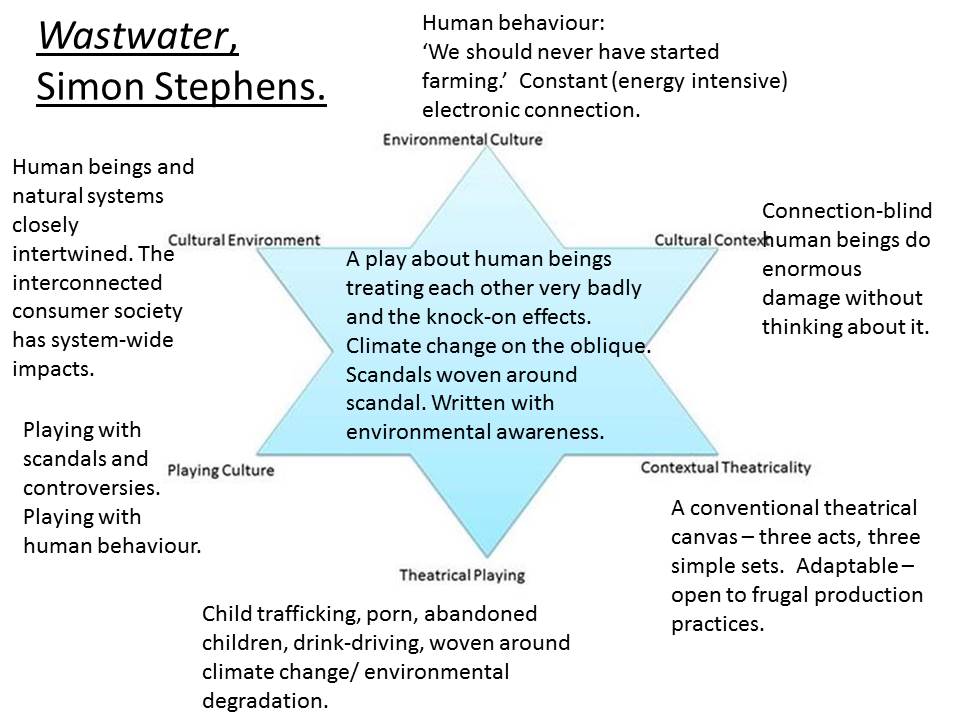Playing with the Diamond Model
This content is in draft - it contains some of the ideas I talked about at the IFTR conference. In this diagram two nodes are added to the usual Diamond Model (Sauter). I am looking forward to feedback on this idea - which could (for several reasons) be thrown out.
Environmental culture denotes human behavior within the environment. The question is, what kind of enviro-cultural regime prevails? Is it as described by Una Chaudhuri: ‘hyperenviromentalism’, denoting rupture, depletion to exhaustion and degradation? Alternatively, is there an eco-cultural regime of continuity, recycling and conservation? How is this reflected in the theatrical event? To what extent is the event shaped by it?
Cultural environment denotes the positioning of the environment in society. Is the relationship adversarial, as in the infamous culture and nature divide, in which nature is dominated by human beings, and the natural environment seen (by those who would wish to protect it) as degraded by the presence of human beings? Alternatively, is it accepted that nature is culture and culture is nature, that human and non-human aspects of the environment are not only closely intertwined, but perhaps the same thing?
Putting the two ideas together, are those involved in theatrical production and reception aware of the system-wide impacts of the interconnected consumer society? To what extent are those involved in any theatrical event conscious that the (environmental and social) behaviour patterns running through the event may be shaped by the culture they are steeped in?
In this example, the framework is applied to Simons Stephens play Wastwater, which I saw at the Royal Court in 2011.

